Applications
GEC reference cell
 The Gaseous Electronics Conference (GEC) reactor has been
designed to serve as a reference for experimental and
modeling studies. PLASIMO results are compared to experimental data
for a capacitively coupled argon plasma.
The Gaseous Electronics Conference (GEC) reactor has been
designed to serve as a reference for experimental and
modeling studies. PLASIMO results are compared to experimental data
for a capacitively coupled argon plasma.
Sputtering hollow cathode discharges
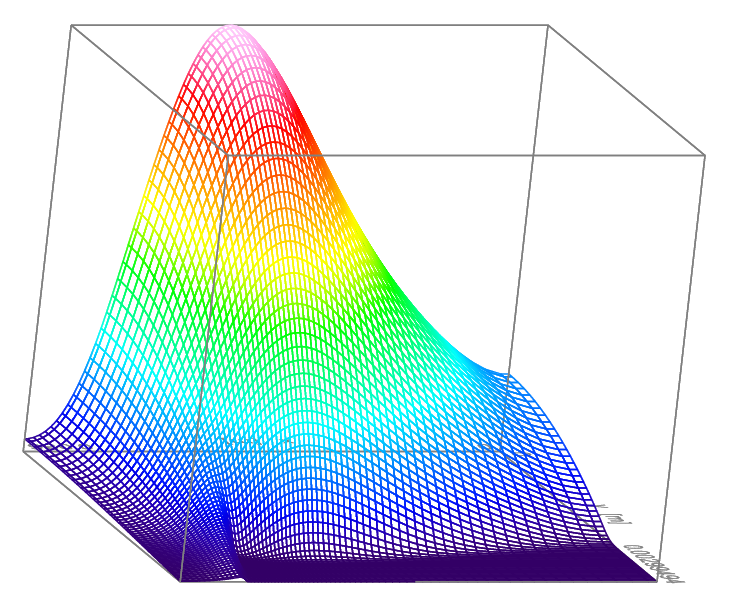 PLASIMO has been used to facilitate in-depth studies of sputtering
hollow cathode discharges (HCD).
The constructed models have been validated by comparison with
experimental data, and have
been used to optimize the operating conditions and the HCD
geometry for effcient laser oscillation.
Furthermore, PLASIMO has been used to design a novel hollow cathode construction.
PLASIMO has been used to facilitate in-depth studies of sputtering
hollow cathode discharges (HCD).
The constructed models have been validated by comparison with
experimental data, and have
been used to optimize the operating conditions and the HCD
geometry for effcient laser oscillation.
Furthermore, PLASIMO has been used to design a novel hollow cathode construction.
Mercury-free high intensity discharge lamp
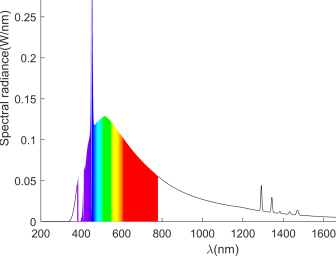 In mercury-free lamps, the dominant mercury background gas is replaced with
salts like InI and SnI. Modeling of such a complex chemistry becomes
very challenging.
The PLASIMO radiation energy transport (raytracing) module has been used to
simulate the complete spectra of such lamps.
In mercury-free lamps, the dominant mercury background gas is replaced with
salts like InI and SnI. Modeling of such a complex chemistry becomes
very challenging.
The PLASIMO radiation energy transport (raytracing) module has been used to
simulate the complete spectra of such lamps.
DC glow discharge tube
 The PLASIMO time-dependent Drift-Diffusion model is used for simulation
of a DC glow discharge tube.
The model accurately captures the structure of the discharge: cathode
fall region, negative glow, Faraday dark space and positive column.
The PLASIMO time-dependent Drift-Diffusion model is used for simulation
of a DC glow discharge tube.
The model accurately captures the structure of the discharge: cathode
fall region, negative glow, Faraday dark space and positive column.
Plasma needle
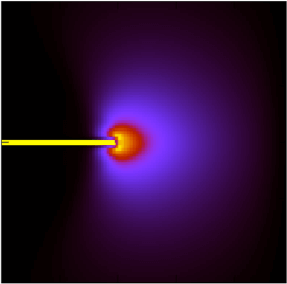 The plasma needle is a small (~ 1 mm) atmospheric, non-thermal,
radiofrequency plasma, generated at the tip of a metal wire.
The PLASIMO time-dependent Drift-Diffusion model is used to describe
the plasma properties and to provide insights into the physical processes.
The plasma needle is a small (~ 1 mm) atmospheric, non-thermal,
radiofrequency plasma, generated at the tip of a metal wire.
The PLASIMO time-dependent Drift-Diffusion model is used to describe
the plasma properties and to provide insights into the physical processes.
Global modeling of complex mixtures The PLASIMO Global Model has been used to model very complex mixtures, such as CO2, H2O-He, H2-N2-O2, H2-N2-O2-C and O2-SiCl4. Many other mixtures are available in the PLASIMO database.
Cascaded arc
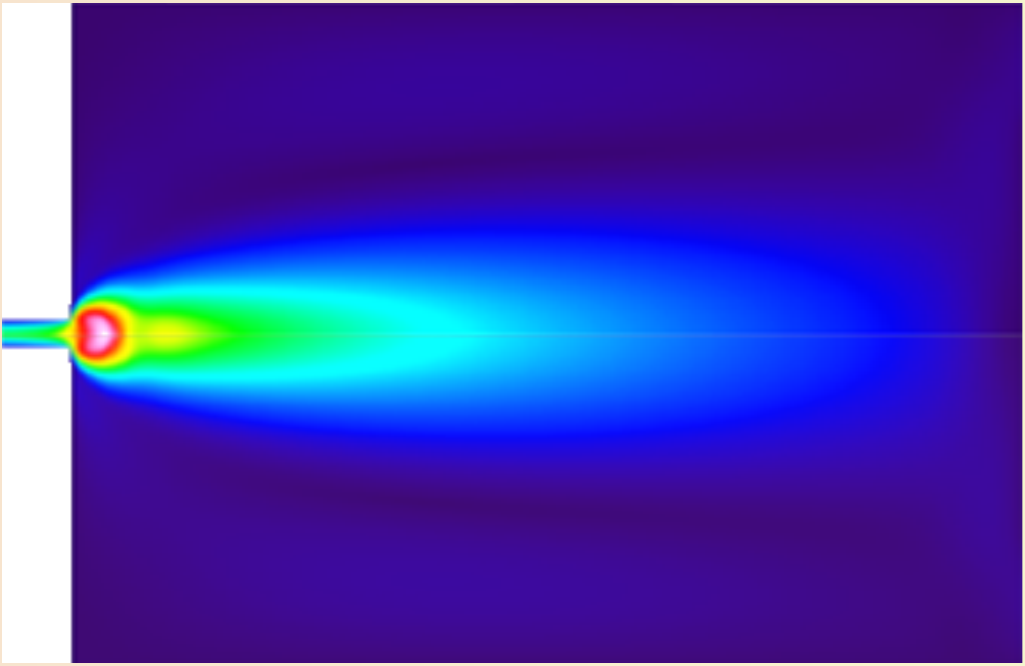 PLASIMO has been used for simulating a plasma source for material
research under fusion-relevant conditions (Magnum-PSI). PLASIMO succesfully
handles the challenging combination of the transonic flow field and
the magnetic confinement.
PLASIMO has been used for simulating a plasma source for material
research under fusion-relevant conditions (Magnum-PSI). PLASIMO succesfully
handles the challenging combination of the transonic flow field and
the magnetic confinement.
Coaxial waveguide
 PLASIMO has been used to study a coaxial configuration.
The plasma is formed around a quartz tube
and acts as an outer conductor in such a way that a spatially extended
surface wave is created.
PLASIMO has been used to study a coaxial configuration.
The plasma is formed around a quartz tube
and acts as an outer conductor in such a way that a spatially extended
surface wave is created.
Surfatron plasma source PLASIMO has been used in a number of surfatron plasma studies. For the first time, it permits describing self-consistently the plasma inside and outside the surfatron cavity.
COST reference jet
 The PLASIMO Drift-Diffusion module coupled with the flow module is used
for self-consistently modeling the plasma behavior in jets.
The PLASIMO Drift-Diffusion module coupled with the flow module is used
for self-consistently modeling the plasma behavior in jets.
Plasma shower
 The plasma shower is an atmospheric pressure high density rf plasma
developed for material processing. PLASIMO has been used to describe the
plasma behavior and to facilitate in-depth studies of the various aspects
of the plasma shower.
The plasma shower is an atmospheric pressure high density rf plasma
developed for material processing. PLASIMO has been used to describe the
plasma behavior and to facilitate in-depth studies of the various aspects
of the plasma shower.
Microwave plasma deposition source PLASIMO has helped in designing and optimizing a microwave reactor for depostion of SiO2 for optical fiber production. The modeling studies demonstrated that the reactor geometry can be altered to confine the plasma and thus to achieve more uniform and controlled deposition profile.
Streamers
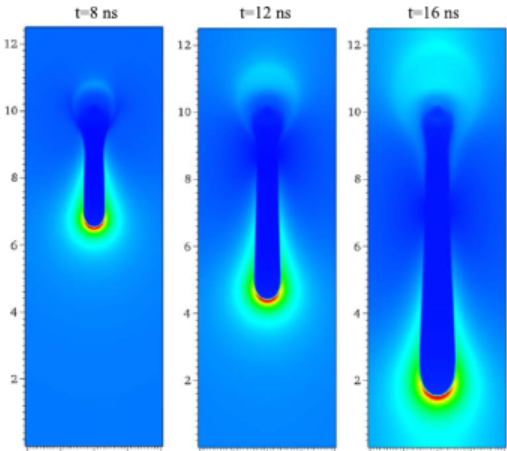 PLASIMO can be used for simulations of streamers and streamer-like
discharges. A model for a positive streamer in air has been validated by
comparison with
other simulation codes. Results are published in "Comparison of six
simulation codes for positive streamers in air", B.Bagheri etal.,
Plasma Sources Science and Technology, 27:095002.
Read article
PLASIMO can be used for simulations of streamers and streamer-like
discharges. A model for a positive streamer in air has been validated by
comparison with
other simulation codes. Results are published in "Comparison of six
simulation codes for positive streamers in air", B.Bagheri etal.,
Plasma Sources Science and Technology, 27:095002.
Read article
Plasma surface and airborn decontamination
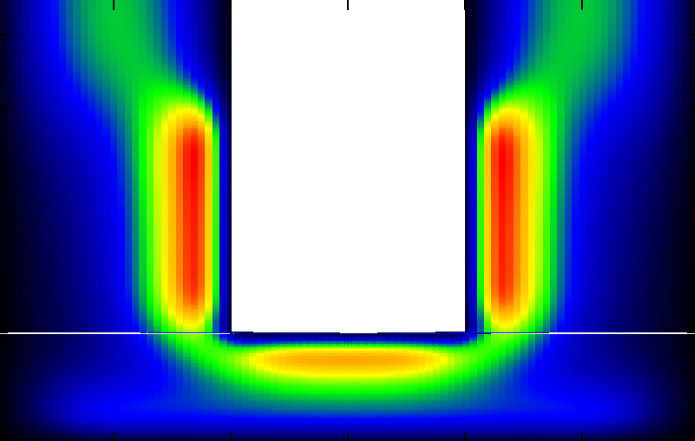 The PLASIMO Drift-Diffusion module has been used to study and develop new
plasma-based technology for the next generation of molecular decontamination systems.
The PLASIMO Drift-Diffusion module has been used to study and develop new
plasma-based technology for the next generation of molecular decontamination systems.